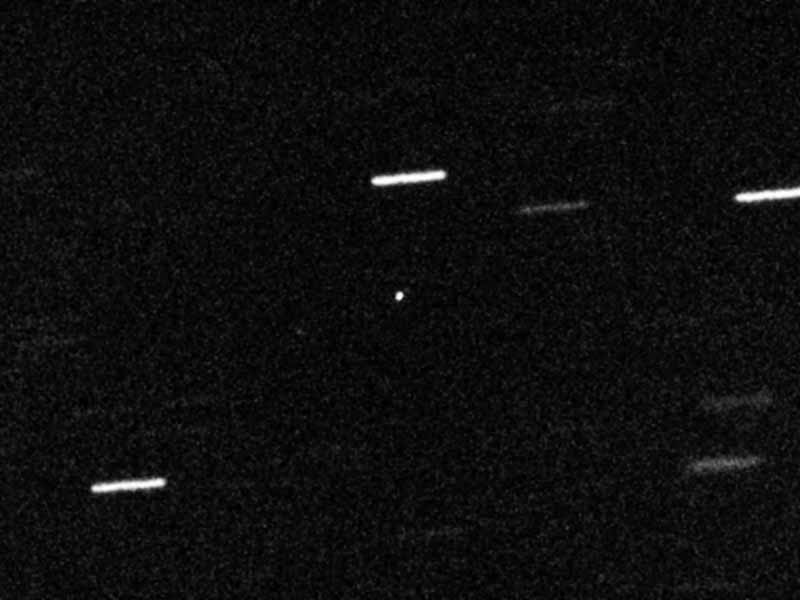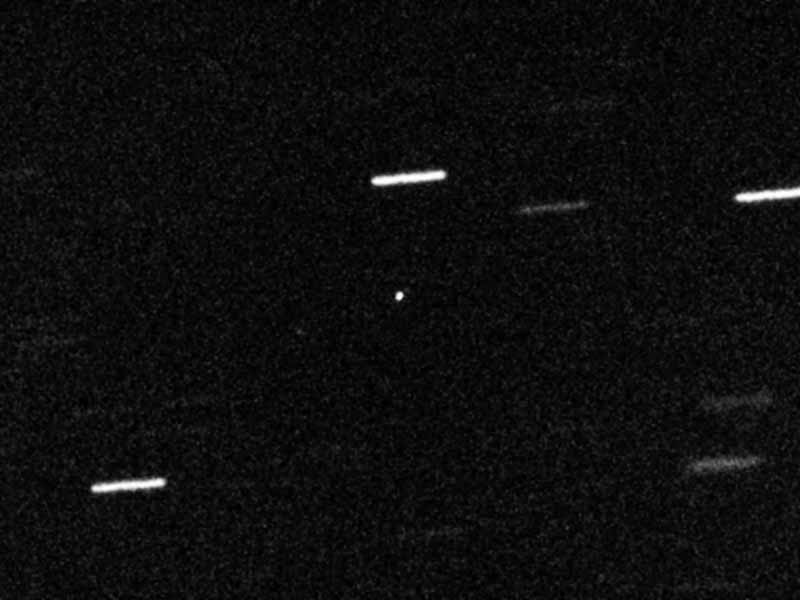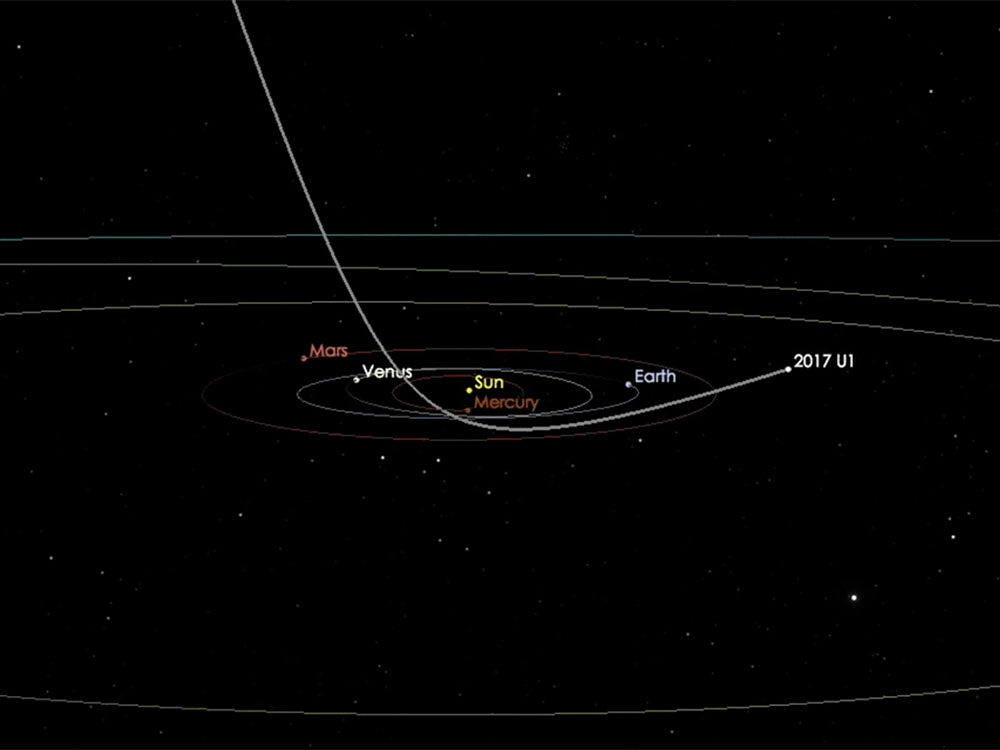ʻOumuamua
The first interstellar object observed within our solar system. Generally attributed to be an asteroid, 'Oumuamua's exact origin is unknown. Its unusual properties have led some leading figures in astronomy to suggest we can't eliminate the possibility 'Oumuamua is an extraterrestrial craft.
The unusual object had recently done a fly-by of the sun and was discovered by Robert Weryk at the Haleakala Observatory, Hawaii, on October 19, 2017. The object, named 'Oumuamua, was notable in that it was the first known interstellar object to enter into our solar system. The name 'Oumuamua is a Hawaiian name that translates to "a messenger from afar arriving first."

'Oumuamua demonstrated very interesting physical properties upon closer observation: its oblong shape has a pronounced length-to-width ratio, it is highly reflective, and it appears to be "tumbling'' in its flight pattern. Perhaps most notable, 'Oumuamua was observed to be accelerating in a manner that was not caused by either gravitation or the "rocket effect" caused by melting ice (as in a comet). The hypothesis for this acceleration is that solar radiation pressure is driving the acceleration. This hypothesis, combined with other strange physical characteristics and its unusual origin, have led a small subset of experts, notably Harvard's Avi Loeb, to suggest that 'Oumuamua could be an extraterrestrial craft powered by solar sail technology.
Although officially classified as an asteroid, more study is needed to determine the specific properties of 'Oumuamua. The object is currently outside of our field of observation, although there is hope that, because 'Oumuamua will be in our solar system for many years to come, there will be more opportunities to study the object in the future, and as technologies advance.

















